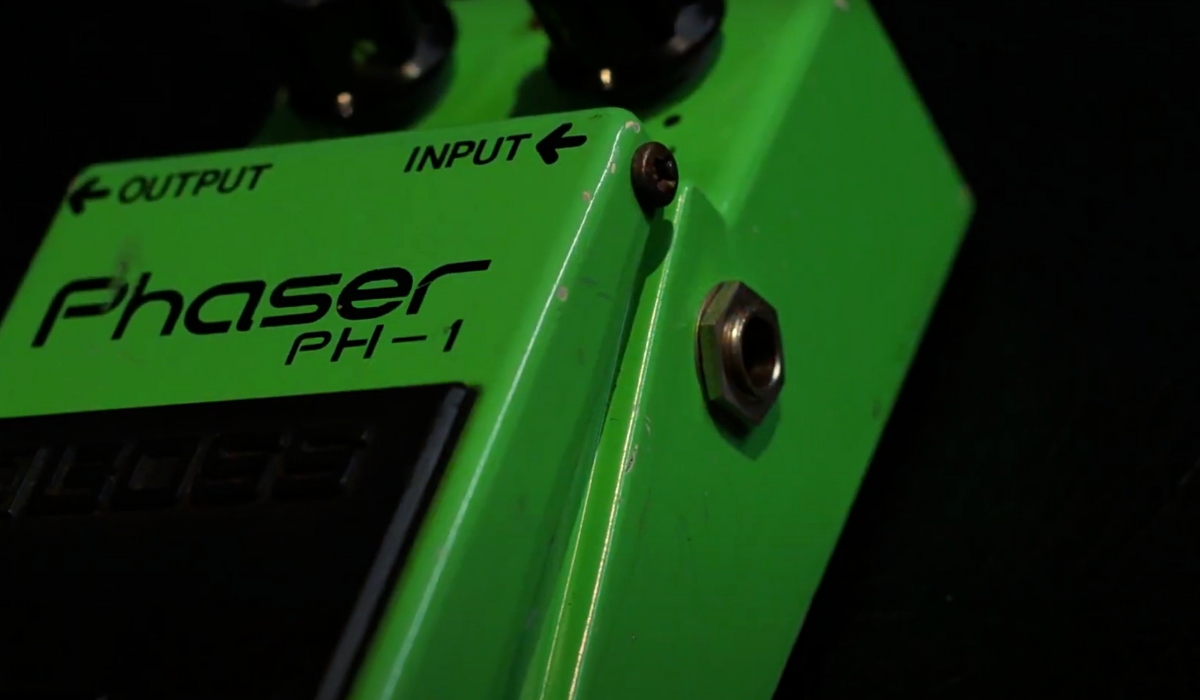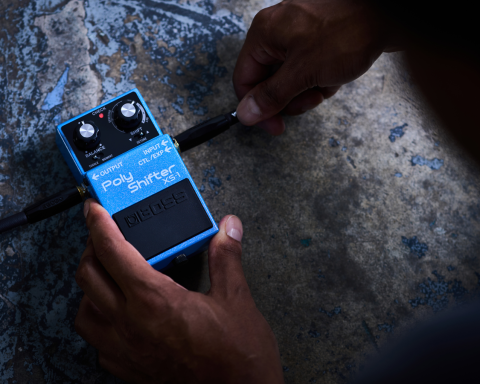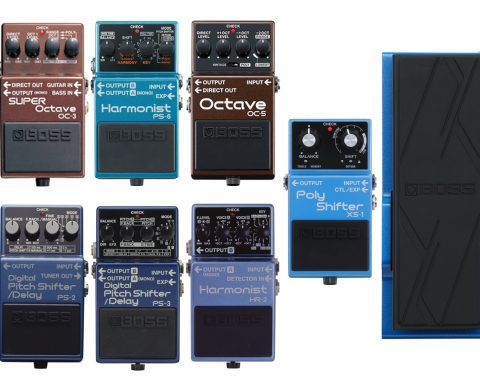Phaser is a versatile, classic modulation effect that helped define the sound of the 1970s like chorus did in the 1980s. The effect can create vast, dynamic swirls. By contrast, it can function as a mild tone enhancer, adding gentle movement to a progression or solo. While phaser for guitarists emerged in the ’70s, the effect soon transcended decades and genres. Often considered the more tasteful of its close siblings, chorus, flanger, and vibrato, the phaser is a fantastic tool for lifting and enriching a guitar tone.
Phaser History
The introduction of simple stompbox-style phasers in the mid-’70s was vital. Phaser exploded into mainstream popularity in the 1970s, defining the sound of psychedelia. Songs like “Have A Cigar” by Pink Floyd and Eddie Van Halen’s solo piece “Eruption” quickly made the effect a classic.
Guitar effects were still cutting their teeth at the time. Pedals like the BOSS PH-1 influenced the decade’s fast-developing guitar evolution. In fact, the PH-1 was one of three stompbox effects that launched the BOSS compact range in 1977, alongside the OD-1 and SP-1. The phaser has evolved with BOSS over the years, seeing many evolutions of its own.
What is a Phaser?
Understanding what a phaser does to a guitar signal is critical to understanding how to implement and control it in a setup. A phaser splits a guitar signal into two separate signals. This division allows one signal to pass through unaffected and applies all-pass filters to the other. As a result, the two signals pass in and out of phase at a varying speed defined by an LFO. This causes a muffling or dipping of tone when the signals are out of phase and a sharp spike in tone when aligned.
"As with most modulation effects, a phaser should sit centrally in the effects chain."
Setup Considerations
As with most modulation effects, a phaser should sit centrally in the effects chain. Overdrives, distortions, EQs, or filters should come ahead of the phaser, allowing the phaser to affect and enhance them. Any time-based effects, such as delay and reverb, should come after the phaser, allowing them to function cleanly and clearly.
If the amplifier has an effects loop, running any modulation effects in the effects loop is often favored for them to function cleanly and clearly. This way, the pedal tone remains unaffected by the amplifier’s preamp. However, this is purely down to player preference. Phaser will sound great in either application.
FIVE PHASER PEDAL USES
Slow Pink Floyd Style
David Gilmour was behind some of the most creative examples of phaser to create psychedelic overtones in Pink Floyd’s catalog. Listen to tracks like “Shine On You Crazy Diamond” and “Have A Cigar” for great examples of a slow, soft phase shift creating a gorgeously spacey guitar tone.
To create something like this, set the phaser to the classic four-stage mode for a smooth phase. Next, set the effect rate to around seven or eight o’clock. It needs to be as slow as possible while creating enough noticeable movement. The pedal depth and resonance controls can both be at around 11 o’clock.
In essence, the effect needs to be relatively gentle, allowing the clean guitar part to shine through. The result is a slow, soft, cresting wave of frequencies rolling subtly alongside the guitar’s natural tone, adding a gentle movement that lifts the guitar part without overpowering it.
Funky Modes
At the other end of a phaser’s tonal spectrum, the effect can create a sharp, wah-like tonal character, perfect for funky chords. The Isley Brothers put this style to great effect in songs like “That Lady, Parts 1 & 2.” The choked strumming partnered with an aggressive phaser is a classic trick, perfect for creating a bouncy movement to a straightforward guitar part.
Set the phaser to a ten or 12-stage mode to achieve this effect. The increase in stages affects how extreme the phaser’s EQ curve is. Higher stages mean less subtle, more aggressive, and overpowering phase movements.
"At one end of phaser’s tonal spectrum, the effect can create a sharp, wah-like tonal character, perfect for funky chords."
Set the pedal’s rate relatively high, around 3 o’clock, and set the depth and resonance controls around the same. This setting will create a great basic funky tone, although the phaser’s speed depends on the song’s tempo. With the BOSS PH-3, hold down the footswitch for a couple of seconds to move the pedal into tap tempo mode. Then tap the footswitch in time with the song to match the phaser’s movement.
Bubbly Vibrato
At its most extreme, a phaser can be an almost vibrato-like effect, creating an exaggerated wobbly, practically comic effect. This sound isn’t for everyone, but this will do the trick for a more extreme, spacey, ’50s sci-fi guitar tone.
A fast rate and depth are crucial to creating this type of tone. Set the mode to a ten or 12-stage setting for the most extreme warble. With the phaser set to such an overpowering effect, any complex guitar parts will become muddy. Still, simple single-note progressions or held chords will work well.
"On more modern phasers, like the BOSS PH-3, a Step mode staggers the phase stages in a jagged stepped movement."
Stepped Phaser for Synth-like Tone
Phaser traditionally has a gently staggered, fluid movement, like rolling a tone control on and off. However, on more modern phasers, like the BOSS PH-3, a Step mode staggers the phase stages in a jagged stepped movement. This mode creates an almost tremolo-like effect alongside the evolving movement of the phaser.
The result is a coarse, synth-like tone that can sound similar to a ring modulator when set to a high rate. Perfect for guitarists looking to take a walk on the wilder side of modulated tone, and ideal for creating more than one effect with a single stompbox.
Manual Phase Shifting
Phaser is an excellent effect for adding movement and intrigue to an otherwise boilerplate guitar part, but players can take it a step further by adding an expression pedal. In the case of the BOSS PH-3, it’s easy to connect an expression pedal to take manual control of the rate effect of the phaser.
With the mode set to either the ten or 12-step phaser, the player has a vast range of movement within the heel-to-toe position of the expression pedal. Try ringing out a chord and moving the expression pedal from heel to toe. In the heel position, the effect will be a gentle, classic phase. However, the toe position will be an almost vibrato-like bubbly tone.
"Phaser is a modulation effect for every situation. It’s the perfect tool for both the subtle and the extreme."
Modulation for Every Situation
Phaser is a modulation effect for every situation. It excels as a tone thickener, slowly adding a wave of cascading movement to any guitar part. At the same time, it can be funky and almost auto-wah-like. It can create a vibrato-like warble. It can turn a guitar into a synthesizer. It’s the perfect tool for both the subtle and the extreme. Loved by countless guitar heroes from every decade since its invention, phaser also excels when used alongside other effects.






